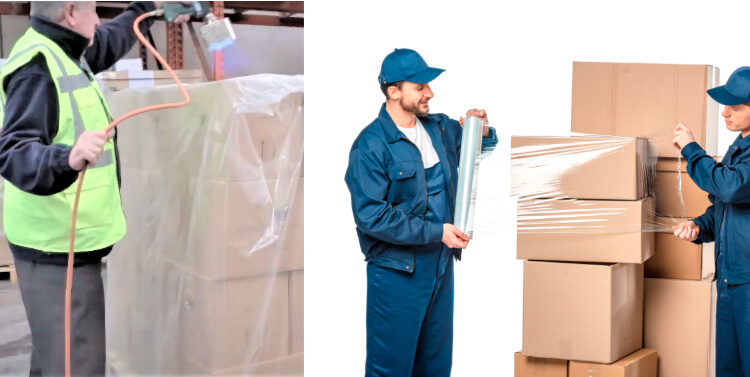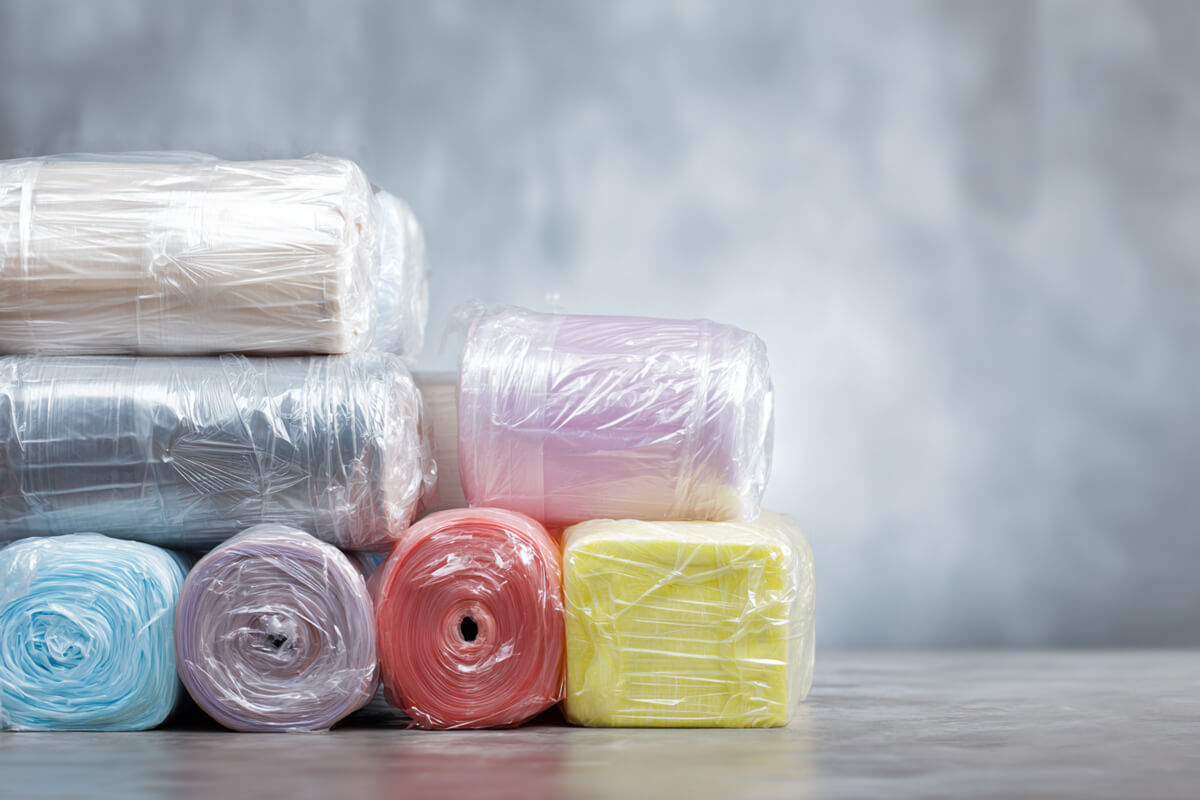What is the Difference Between Shrink Wrap and Stretch Wrap?
When it comes to product protection and keeping things intact during transportation, shrink and stretch wrap are excellent packaging solutions. They are tear-resistant, water-proof, and dust-proof. However, both methods differ from one another and have their own distinct benefits. It’s critical to understand the differences and how each one works before making your final decision on which approach to employ when packaging.
What Exactly is Shrink Wrap?

Shrink wrapping entails covering a group of products loosely with shrink film, a thin yet durable material often manufactured of polyolefin polymers. Shrink film is designed to contract with heat due to the molecular nature of various types of plastic, shrinking it over the group of items to produce a tight seal.
One of the reasons shrink wrap is often used in food containment is because it is extremely hygienic, keeping the objects protected from dust and bacteria. When it comes to packaging, however, this tight seal can serve to protect boxes from even the wettest of conditions, making it ideal for outside transit even in inclement weather.
The Benefits of Using Shrink Wrap
One significant advantage of using shrink wrap is that it does not damage the outer packaging. Because of the nature of the shrink film, there should be no material chafing or scuffing when correctly placed. While a heat gun or other type of heating machine is required to apply it effectively, having one makes the job exceedingly easy.
Shrink wrapping saves time and labour when compared to other packaging methods. All it takes is a single, loosely wrapped layer while the heat gun performs the rest.
Finally, shrink wrap allows you to seal it while still keeping it vented. When carrying items, one significant problem is that they become wet, and moisture can end up sealed within the group of packages by employing various sorts of packing supplies. However, using shrink film prevents any potential moisture damage.
Different Types Of Shrink Wrap
Shrink wrap can be used for a variety of applications. Boat shrink wrap is used to protect boats from the elements. Shrink tubing, on the other hand, is frequently used to wrap a cylindrical object or to create a pre-cut sleeve. The most typical type of shrink wrap, on the other hand, comes in big rolls.
Shrink wrap rolls are classified into three varieties based on the material they are made of. Each material has benefits and situations in which it is better suited.
PVC Shrink Wrap
PVC is inexpensive and lightweight, and it formerly dominated the shrink wrap business. Its stiffness makes it suitable for heavy parcels; however, any weight wrapped in PVC shrink wrap should be kept in a well-ventilated location. Because PVC contains numerous hazardous compounds, it should be handled with extreme caution.
Polyolefin Shrink Wrap
As previously stated, polyolefin (or POF) is the most commonly utilised material in the production of shrink wrap. It’s tough, forms a tight seal, and is impervious to punctures. Furthermore, POF shrink wrap is extremely secure and FDA-approved, posing no security hazards to the packager.
Polyethylene Shrink Wrap
Polyethylene, sometimes known as PE shrink wrap, is increasingly becoming a viable alternative to PVC for larger or heavier products. While this material is more expensive, it is firmer and can have graphics printed on it without compromising its structural integrity.
What Exactly Is Stretch Wrap?

Stretch wrap, as opposed to shrink wrap (which is wrapped loosely and then sealed with heat) involves stretching flexible plastic around the objects to hold them in place. To assist in keeping parcels together, shipments are often wrapped with stretch film.
The Benefits of Using Stretch Wrap
Stretch wrap is far less expensive than other varieties of plastic wrap, making it one of the most cost-effective packaging materials. Stretch wrap also keeps dirt and moisture away from the parcels, and some types of stretch wrap even provide UV protection. There is no special equipment required, you simply need to wrap an item or products a number of times with stretch wrap to make the tightest closure possible.
Stretch film is extremely versatile and can be used to wrap any shape or size of an object. It’s great for short trips because of its low retail price, which allows you to use it as often as you need without spending a fortune.
Different Types Of Stretch Wrap
Stretch wrap, unlike shrink wrap, comes in a variety of shapes and sizes, which are primarily dictated by how the packaging is wrapped. Here are a couple of such examples:
Hand Stretch Wrap
This sort of hand stretch film is made in the shape of long rolls that are easy to unwind and use by hand. It is the sort of stretch wrap most typically found in kitchens around the world to keep food safe, but it is also widely used in the packaging sector.
Hand stretch wrap is further classified into several categories. Cast, blown, pre-stretch, bundling, identi-wrap, and anti-static are some of the categories.
Machine Stretch Wrap
Machine stretch wrap is intended for industrial use and is compatible with a variety of packaging machinery. This strategy is intended to save labour expenses and valuable time by forcing workers to provide minimal input.
Depending on how the machine works, machine stretch film is further subdivided into blown and cast subcategories.
Shrink and Stretch wrap solutions to meet your needs
We believe in providing high-quality packaging supplies at reasonable prices. We ship all across the United Kingdom and offer a wide array of packaging supplies, including many different options of shrink and stretch wrap. To find out how we can assist you with all of your packaging needs, get in touch with our team today.






